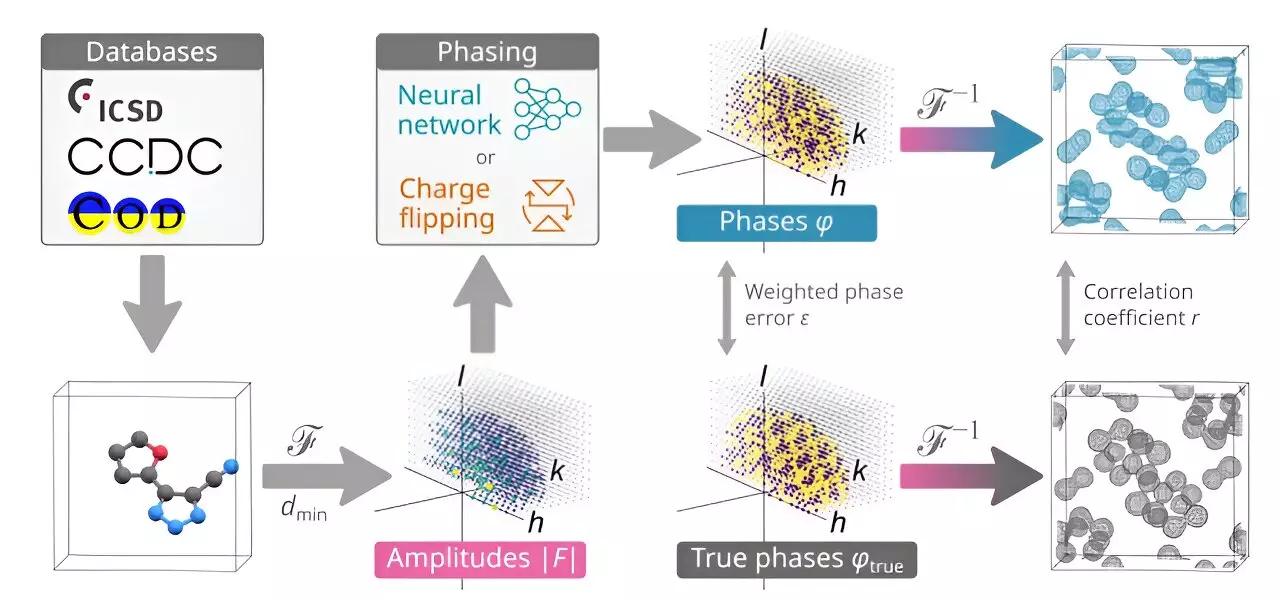Chemistry, a field often associated with trial and error, is now entering a new era thanks to the collaboration between chemists and computer scientists. A recent development by a trio of chemists at the University of Copenhagen has led to the creation of an innovative AI application designed to predict the structure of small molecules based on x-ray diffraction patterns. This breakthrough not only highlights the potential of artificial intelligence in the field of chemistry but also sheds light on the importance of technology in advancing scientific research.
The current process of predicting the structure of small molecules involves converting them into solid crystals and analyzing the diffraction patterns produced by x-ray beams. While measuring the intensity of x-rays is relatively straightforward, determining their phase has proven to be a challenging task for researchers. This inability to accurately measure the phase often results in fuzzy diffraction patterns, hampering the process of determining molecular structures. The lack of precise phase information has long been a bottleneck in crystallography, limiting the accuracy of structural predictions.
In response to this challenge, Anders Larsen, Toms Rekis, and Anders Madsen developed an AI application named PhAI to address the issue of fuzzy diffraction patterns. By leveraging computer models to generate millions of artificial small molecule structures, the research team was able to compute the corresponding fuzzy diffraction patterns and establish a relationship between crystal structures and diffraction patterns. Through extensive training, the AI was equipped with the ability to predict both phase and intensity information, leading to accurate structural predictions for a diverse range of small molecules.
Testing of the PhAI system demonstrated its ability to accurately predict the structure of 2,400 small molecules with known structures, showcasing the effectiveness of AI in crystallography. The research team’s success has paved the way for further advancements in the field, with plans to expand the capabilities of PhAI to predict the structures of molecules beyond 50 atoms. The ongoing development of AI applications in chemistry holds immense promise for streamlining complex processes, accelerating research progress, and opening up new avenues for scientific exploration.
The collaboration between chemists and computer scientists has brought about a significant breakthrough in the field of chemistry with the development of PhAI. By harnessing the power of artificial intelligence, researchers are now able to overcome the challenges associated with predicting small molecule structures, marking a pivotal moment in the evolution of crystallography. As technology continues to reshape the landscape of scientific research, the possibilities for innovation and discovery are boundless.



Leave a Reply